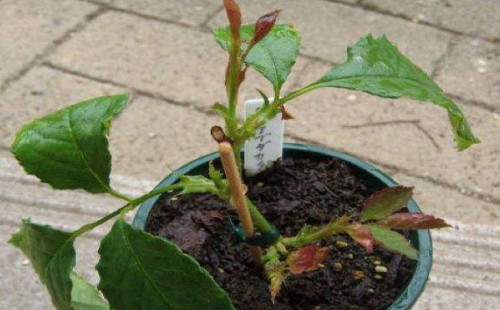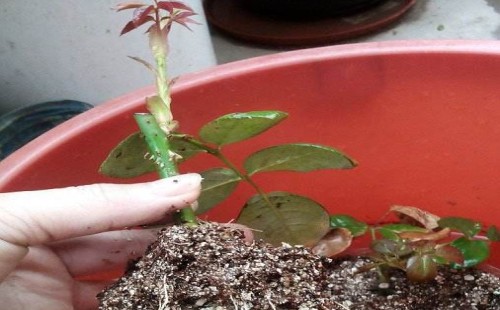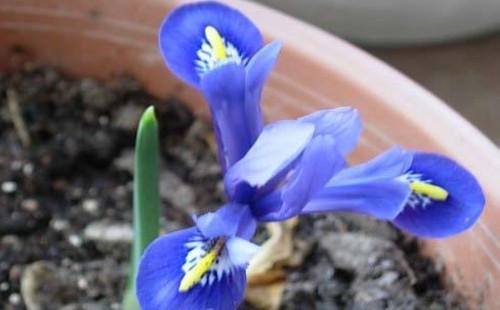Selection method of cutting branches of Rose
Rose seedlings are mostly obtained by means of cutting, and whether the propagation seedlings can be successful or not, the selection of branches is very important. The higher the quality of the branch, the higher the success rate after cutting; on the contrary, the lower the quality of the branch, the lower the survival rate after cutting. So, how to choose rose cuttings? Today, the editor will briefly share with you the method of selecting cuttings of rose.

Rose branches usually need to go through many steps such as disinfection and soaking rooting solution before cutting, which will be more conducive to promote the germination and rooting of cuttings, but this is not enough. First of all, we need to ensure that the quality of the selected branches is high enough, which is the basic condition to ensure the smooth survival of cuttings. In order to get high quality cuttings, we usually choose according to the following points.
1. The leaves on the selected branches should be strong and full, because whether the rose can take root smoothly, strong and full leaves are very important. If a branch wants to take root smoothly, it is necessary to carry out photosynthesis through the leaves on the branch. If the leaf itself is relatively weak, and it is easy to fall off after the cutting, the cutting is bound to fail. Therefore, the robustness of leaves determines the success or failure of cuttings to a large extent.
2. It is forbidden to select budding branches, otherwise new buds will sprout quickly after cuttage. If the new buds germinate originally and prematurely but do not take root, the cuttings will not be able to absorb water and nutrients through the roots. After all, the water and nutrients in cuttings are limited, which is not enough to support the growth of new buds, so after a period of time, the branches will blacken and the buds will die. Therefore, when we select branches, we should make sure that there are bud holes on the branches, but at the same time, we should avoid the phenomenon that buds are sprouting.
3, do not blindly cut branches as cuttings, usually need to choose strong-growing branches, which is the same as the principle of the previous point. If the thinner branches are selected for cutting, because there are less nutrients stored in the branches, and there are not enough nutrients to maintain growth after cutting, it will often lead to cutting failure. On the contrary, only when the selected branches are strong enough, there are enough nutrients in the branches after cutting to maintain and promote rooting and germination.
The above is that cutting rose is the requirement for the selection of branches, and it can also be the basic principle for selecting branches. Only when we choose robust branches and leaves for cutting, can we often achieve success and cultivate high-quality rose cuttings.
Time: 2019-06-07 Click:
- Prev

How did the branches blacken after the rose cuttings?
As a family user, potted rose seedlings are generally obtained by cutting, and the operation method is relatively simple, not only in soil, but also in water. As long as the cutting methods are scientific and the means of management and protection are reasonable, the two cutting methods are very easy to be successful. But
- Next

Iris seeds will be sown in several months.
Iris has a wide variety and rich colors, mainly yellow, blue and white. As a potted plant, it has high ornamental value. And this kind of flower plant is very easy to grow and survive, so both novice and experienced potted friends who are inexperienced in potted plants like to grow irises.
Related
- Fuxing push coffee new agricultural production and marketing class: lack of small-scale processing plants
- Jujube rice field leisure farm deep ploughing Yilan for five years to create a space for organic food and play
- Nongyu Farm-A trial of organic papaya for brave women with advanced technology
- Four points for attention in the prevention and control of diseases and insect pests of edible fungi
- How to add nutrient solution to Edible Fungi
- Is there any good way to control edible fungus mites?
- Open Inoculation Technology of Edible Fungi
- Is there any clever way to use fertilizer for edible fungus in winter?
- What agents are used to kill the pathogens of edible fungi in the mushroom shed?
- Rapid drying of Edible Fungi

